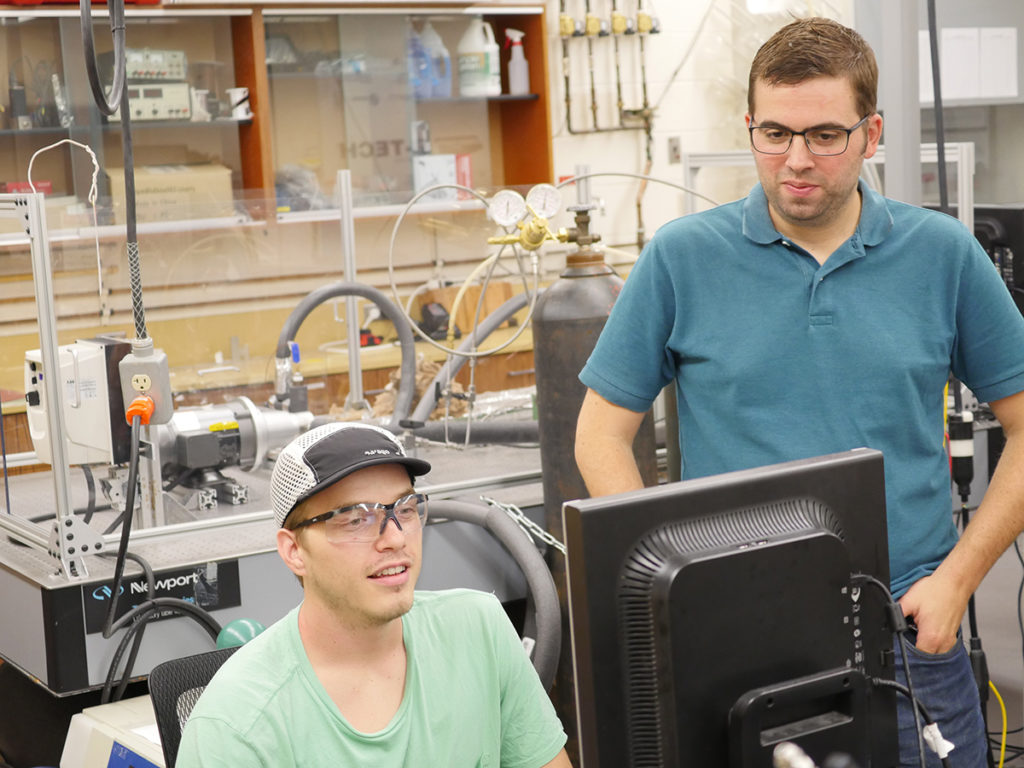
New methods for managing thermal energy in power cycles could bring significant improvements in applications such as electricity generation, advanced aerospace applications, and electronics.
“What we learn could be applied to make those things smaller, less expensive, more efficient, and safer,” said Brian Fronk, assistant professor of mechanical engineering at Oregon State University, who recently received a National Science Foundation CAREER Award to support his work in this area.
Fronk’s research focuses on supercritical fluids. At certain temperatures and pressures above a critical point, fluids transition between liquid and gas properties without undergoing a phase change, such as boiling or condensation.
“Basically the properties change continuously from liquid to vapor, without the formation of bubbles or droplets,” Fronk said.
He is especially interested in carbon dioxide, which has a relatively low critical temperature of 31 degrees Celsius under high pressure.
“That makes CO2 really interesting for what we’re trying to do,” Fronk said. “It lines up closely with the with ambient air temperatures, which makes it very appealing from a heat transfer and thermodynamics perspective.”
However, those same properties could also lead to damaging flow instabilities and degraded heat transfer during certain operating conditions.
“The cause and control of these degradations and oscillations are not well understood,” Fronk said.
Fronk and his research group will use an experimental approach to understand the physical phenomena that govern the heat transfer properties of near-critical fluids, in order to predict and control their potentially damaging effects.
“We’re trying to understand when those instabilities start and under what conditions,” he said. “Then we’ll look at whether we can actually control them and use them to enhance heat transfer, which would allow us to make things smaller and more efficient.”
Specifically, Fronk and his research group will apply a new temperature measurement technique, using fiber optic sensors inside the walls of 3D-printed channels, and measure what happens during transient events — such as sudden changes in applied heat flux, flow rate, or operating pressure. These types of events happen in real systems during startup, shutdown, and accident or off-design operation. The results of this work will be used to develop tools to help design more reliable and efficient heat exchangers.
In addition to funding graduate students for the study, the NSF award will allow Fronk to develop a collaborative, international short course on supercritical power systems. The first offering is planned for September 2020, with a group of Oregon State students going to Brazil to collaborate with researchers doing related work on power generation.
“As excited as I am about this research, I’m also really excited about developing a unique educational program,” Fronk said.
CATEGORIES: Uncategorized
